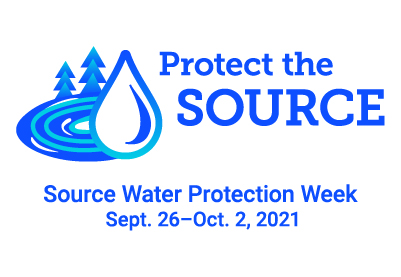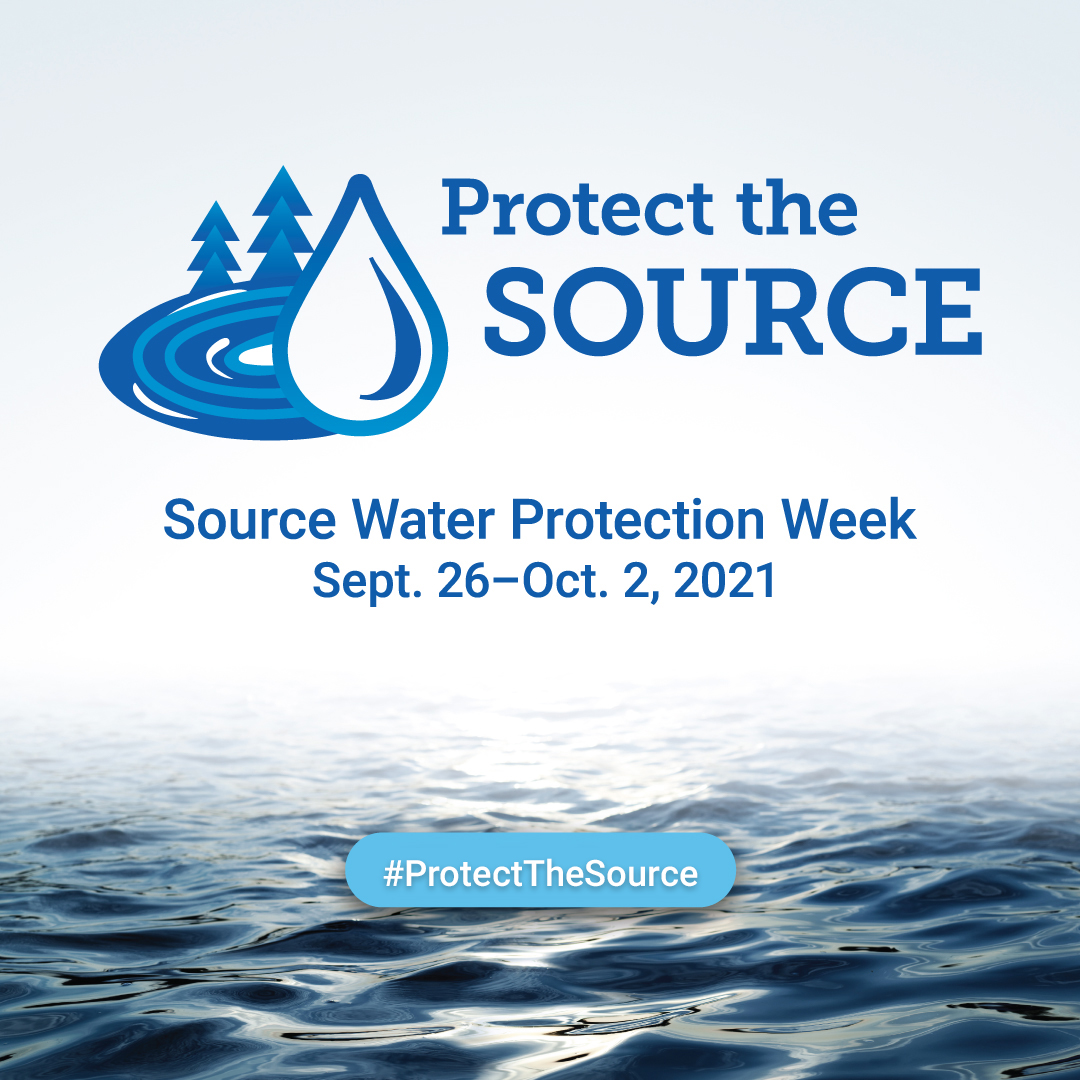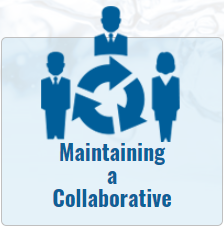
What can you do?
- Use Water Wisely
- Put your waste in the right place
- Tell others about the importance of protecting our water.



 Twenty-nine national organizations have united to protect America’s drinking water at the source – in the lakes, rivers, streams and aquifers we tap for drinking purposes. The Source Water Collaborative (SWC) was originally formed in 2006 with the goal to combine the strengths and tools of a diverse set of member organizations to act now, and protect drinking water sources for generations to come.
Twenty-nine national organizations have united to protect America’s drinking water at the source – in the lakes, rivers, streams and aquifers we tap for drinking purposes. The Source Water Collaborative (SWC) was originally formed in 2006 with the goal to combine the strengths and tools of a diverse set of member organizations to act now, and protect drinking water sources for generations to come.
The Source Water Collaborative has developed this extensive “How-to Collaborate” Toolkit to help others initiate or enhance partnerships to protect drinking water sources. This Toolkit is part of the SWC’s ongoing efforts to help foster local, state and regional/watershed source water collaboratives. Below are excerpts from the SWC Collaboration Toolkit. For more information visit sourcewatercollaborative.org.
Learn about the benefits of a collaborative approach
Find which type of collaborative might work for you
Align planning with priority source water concerns
Identify the resources you have
Identify key partners
Start conversations with trusted partners
Get initial agreement
Consider Steps to Get Started
Identify Leaders and Facilitators
Identify Options for Structuring Your Collaborative
Bring Collaborative Members to the Table
Identify Common Ground Among Your Partners
Define Your Intentions with Key Materials
Engage Members and Drive Action with Communication Tools
Set Specific Goals-Propose Initial Protection Activities
Plan Effective Meetings
Develop Effective Meeting Agendas
Find Sample Meeting Materials
Find Funding Ideas
Engage Partners and Drive Action
Define Priority Outcomes and Set Annual Goals
Create Concrete Actions and Projects
Pursue Common Ground with Partners
Improve Communication Among Collaborative Members
Leverage Funding Opportunities
Engage Stakeholders

Keep Partners Motivated and Engaged
Measure Your Progress
Secure Sustainable Funding
Engage New Partners
IWAC is a member of the Source Water Collaborative (SWC) and one of 29 national organizations, including federal, state, and local partners that are all working together to protect America’s sources of drinking water. SWC members met virtual on 12/16/20 and look forward to quarterly meetings to share source water protection initiatives.
Here is a spreadsheet of other collaboratives.
IWAC’s Sourcewater Collaborative Fact Sheet
The Source Water Collaborative has a variety of resources available on the Quick Tools tab which includes:
KSPS Public Television has joined with the Idaho Washington Aquifer Collaborative to help educate residents in the Inland Northwest about the importance of protecting their sole source of drinking water—the Spokane Valley Rathdrum Prairie Aquifer.
These six videos provide an overview and exploration of the Spokane Valley Rathdrum Prairie aquifer, its importance to the Inland Northwest, how it works, how it can be damaged, and simple actions residents can take to protect and preserve the water from the aquifer. Continue reading
Do you know what happens to things that go down the storm drain? Find out why we say, “Only rain down the storm drain.”
A message from the Idaho Washington Aquifer Collaborative, SAJB, local cities and counties, and the University of Idaho, in cooperation with Washington State University, reminding you to protect our waters!
This video script was adapted by Amanda Hess, Spokane County Division of Stormwater and produced by WSU graduate students Korey Woodley and Jewel Southerland for IWAC from “The Call” radio ad originally produced by Texas Commission on Environmental Quality. Permission to modify the radio ad.
Everyone has a responsibility to protect our water. By proper use and disposal of household hazardous materials, we can protect the river, the aquifer and our drinking water. We must work together to ensure future generations have enough clean water to sustain public health, a healthy environment and a prosperous economy.